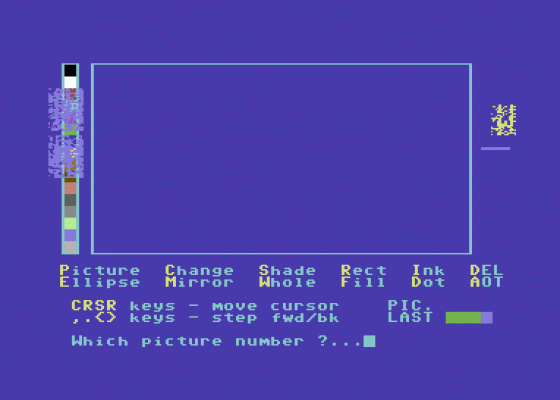
Computer Gamer
 1st September 1986
1st September 1986
Categories: Review: Software
Publisher: Incentive
Machine: Commodore 64
Published in Computer Gamer #18
The Graphic Adventure Creator
Anyone who has ever played an adventure game has probably thought to themselves at some stage "I could do better than that!" Well, here's a chance to put your money where your mouth is.
GAC is a utility that takes away your need to learn machine code or similar and concentrate purely and simply on the story itself. And very straightforward it is to use too. Not that you will be able to sit down and start churning out games of the same standard as, say, Level 9. There is a lot of hard work that goes into adventure writing.
The first things that you will have to do is to define lists of words that are "understood" by the computer and describe your locations. Although it is called a room in the program, a location can be anything you want it to be from a blood vessel to an empty battlefield. Descriptions can be up to 250 characters long, not including details of exits and any objects present.

You can have up to 9,999 rooms, memory allowing. To define a verb, you assign it a number and then type in your entry. It is as simple as that. If two words are to have the same meaning, e.g. jump and leap, you give them the same number.
The same procedure is used for nouns although you usually have to define them as objects as well if the noun can exist in more than one form. For example, suppose you wanted to include an ogre in your game which the player has to kill. You define ogre as your noun because that is what the player will type in (Kill Ogre). But in your room description there will be two types of ogre and so in your list of objects, you define "an angry, snarling ogre" and "a dead ogre".
Once you have defined all your words, you come to the hard part. Sorting out the game's logic. This involves working out which message gets printed when and that appropriate responses are given to the player's inputs. You will be amazed at the number of things that you have to think of.
This is known as the game's conditions and they come in three main types. High priority conditions checks to see if the game has been won yet or if the player is dead. Local conditions apply to the room that you are in. If the ogre is dead, then allow the player to open the secret door. Low priority conditions include things like inventory and score.
Obviously it is far too long-winded to input every condition in longhand and so the progam uses a system of codewords and logic. Remember how you gave numbers to all your nouns, verbs and messages. This is wht you did it. A typical command might be: "IF (VERB 20 AND NOUN 14 AND CARR 4) MESS 19 WAIT END". This might translate as "If the player typed 'Kill Ogre' and he is carrying the sword, then print a message saying that the ogre is dead and wait for the next input".
Whilst you are going all this, you will be using markers and counters. A marker is used when something can exist in two states. For example, a door can be open or closed, a room can be light or dark. You can use up to 256 markers. Counters are used similarly to keep a track of the number of turns taken or score.
Drawing pictures is again straightforward and by looking at some of the sample illustrations, you can see how impressive the pictures can be. You can use up to four different colours plus shading and there are commands to draw rectangles, ellipses and lines as well as filling in areas. The pictures are drawn very quickly, something which is probably of more importance to the player than the writer.
GAC included some highly sophisticated elements in its parser. For example, it could understand "kill the ogre and examine it" or "open the door slowly". Any words can be distinguished so if you wanted to include both a hippopotamus and a hippodrome in your game, there is no problem. You can have a vocabulary of up to 785 words.
GAC is simple to use although it looks somewhat daunting to start with, and the instruction booklet could be better and you can use it to publish your own games without needing to pay any extra money, although you should mention that you used the product.
Highly recommended for any wouldbe adventure writer. Now if you are short of a few ideas why not read Dungeon Dressing in Computer Gamer each month?!
Other Reviews Of The Graphic Adventure Creator For The Commodore 64
The Graphic Adventure Creator (Incentive)
A review
The Graphic Adventure Creator (Incentive)
A review
The Graphic Adventure Creator (Incentive)
A review by Keith Campbell (Commodore User)



